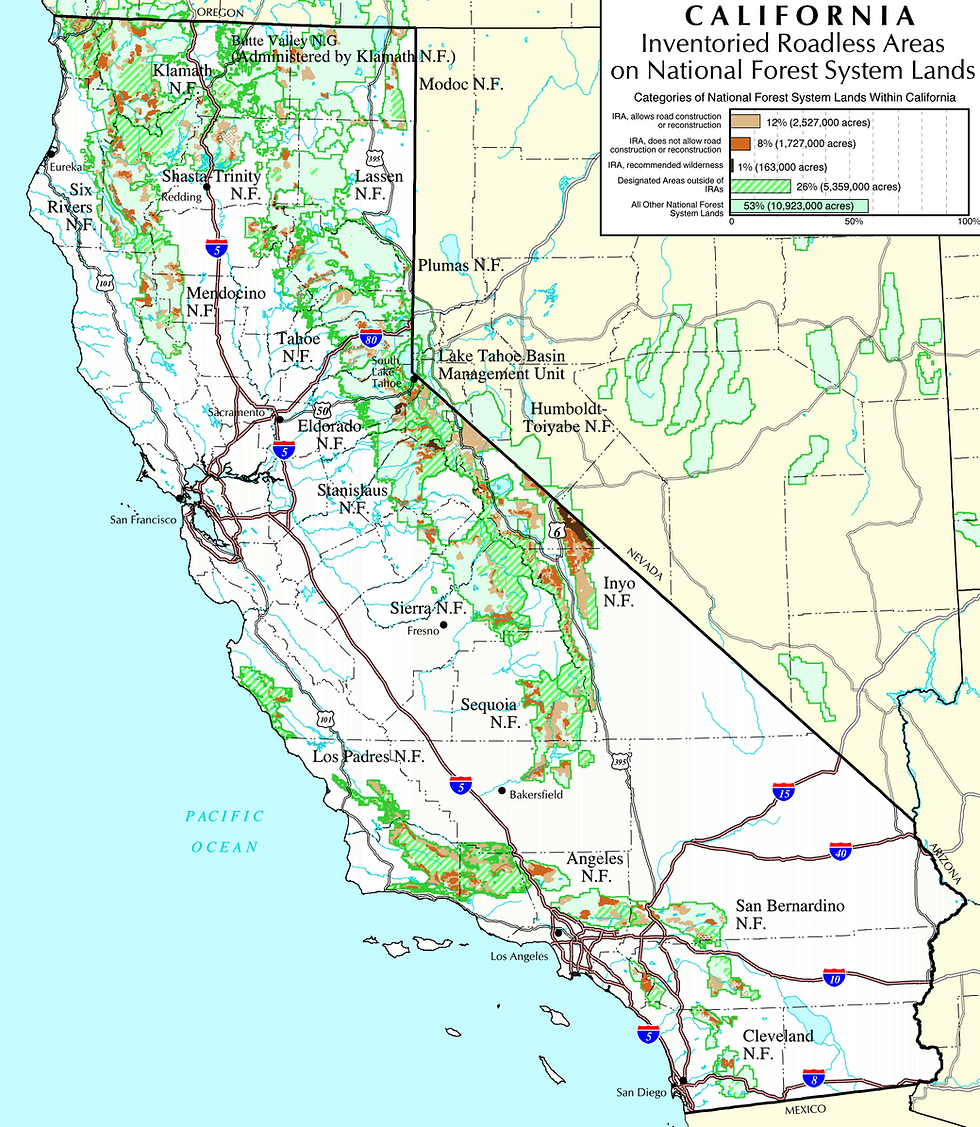Spotted Owl In Jeopardy: More Protections Needed
- Jan 31, 2020
- 4 min read

Family of Northern Spotted Owl. Photo by USFWS Pacific Region.
The longtime icon of the forest defense movement, the northern spotted owl, is quickly headed towards extinction. The cause? A fatal combination of historic and current habitat loss and out-competition by the invasive barred owl, together with other, smaller stressors, like rodenticide exposure. A 2015 demographic study of the owl—the most recent meta-analysis of the species performance—produced alarming results: the spotted owl is functionally extinct in British Columbia, and populations have declined 55–77 percent in Washington, 31–68 percent in Oregon and 32–55 percent in California. Population declines are now occurring on study areas in southern Oregon and northern California that were previously experiencing little to no detectable decline through 2009. The rate of decline is also increasing across the owls’ range.
In 1994, the Clinton Administration passed the Northwest Forest Plan, a long-term strategy to deal with old-growth associated species (like the northern spotted owl) on public lands in the Pacific Northwest. Among other things, the plan created a system of reserves called “Late Successional Reserves.” These reserves were intended to provide well-distributed owl habitat across public lands. The Northwest Forest Plan’s reserve network was largely successful in protecting owl habitat on federal lands, however, the owls continued decline demonstrates that existing efforts are insufficient to protect the owl. The Plan estimated that after passage the owl would continue to decline, but that populations would eventually stabilize and the owl would recover. Instead, the rate of decline has increased, suggesting that the Plan alone is not sufficient for owls on public lands.
Locally, the owl is not meeting performance measures. The most recent publicly available annual report (2018) for the Humboldt Redwood Company helps illustrate some of the challenges. Humboldt Redwood Company operates under a “Habitat Conservation Plan” or HCP. Because of this HCP, Humboldt Redwood Company is authorized to “take”—harm, harass, kill, wound, trap, capture, etc.—northern spotted owls through the operation of their business. The HCP, however, was supposed to contain sufficient habitat protections to ensure that owls would continue to survive across the company’s property. This longtime survival was to be measured through performance objectives. Two of these measures are in question. First, the HCP was supposed to ensure that spotted owl pairs occupy 80% of owl sites. The 80% mark was chosen by taking the average number of owl sites from 1991 to 1998, and so provides a benchmark against which we can gauge performance. In 2018, occupancy by pairs was verified at only 76 of 108 nest sites, giving an occupancy rate of 70%. Another management objective is to maintain .61 fledge young per pair, a target again derived from data from 1994 to 1998. Of the 76 pairs, nesting activity was only verified for 31 of the 76 pairs, and of these 36 were fledged, for a total reproductive rate of .31. In other words, there are not as many owls occupying the property as desired, and of these still left on the property, they are not successfully reproducing.

Barred Owl. Photo by M.E. Sanseverino.
Humboldt Redwood Company lays significant blame on the poor spotted owl performance on the invasive barred owl. We agree, in large part, as the trends demonstrated on their land match those on other lands. However, if barred owls are inhibiting owls on their property, we expect that the company would implement a barred owl management program. Barred owl removal was shown to be effective in the redwood region through a trial experiment on Green Diamond Resource Company land. As barred owls start to occupy spotted owl habitat, the more timid spotted owls give up their former nest sites, becoming what biologists term “floaters.” These floater owls still are present in the forest but they do not display territorial behavior and do not readily vocalize (presumably to avoid drawing the attention of their aggressive cousin, the barred owl). As the redwood region was one of the last areas to be inundated with barred owls, we are thought to have more adult owls still silently floating in the forests, ready to reoccupy their former nest sites if barred owls are no longer present, providing a quicker response to treatment than in other areas. Humboldt Redwood Company will not commit to a barred owl management program on their lands—at least not yet. And similarly although the HCP has failed to achieve its targets, U.S. Fish and Wildlife Service has not yet triggered adaptive management clauses to reexamine what additional measures are necessary for the owl’s survival.
Longtime survival of northern spotted owls in the area is likely only with both increased habitat retention and barred owl removal. EPIC has criticized recent actions by the U.S. Fish and Wildlife Service that has seemingly traded habitat protection for barred owl removal, best exemplified by the new Habitat Conservation Plan for Green Diamond Resource Company. As we approach an extinction event, we need to stop giving away owl habitat and we need to start restoring habitat, which includes barred owl removal.





Comments